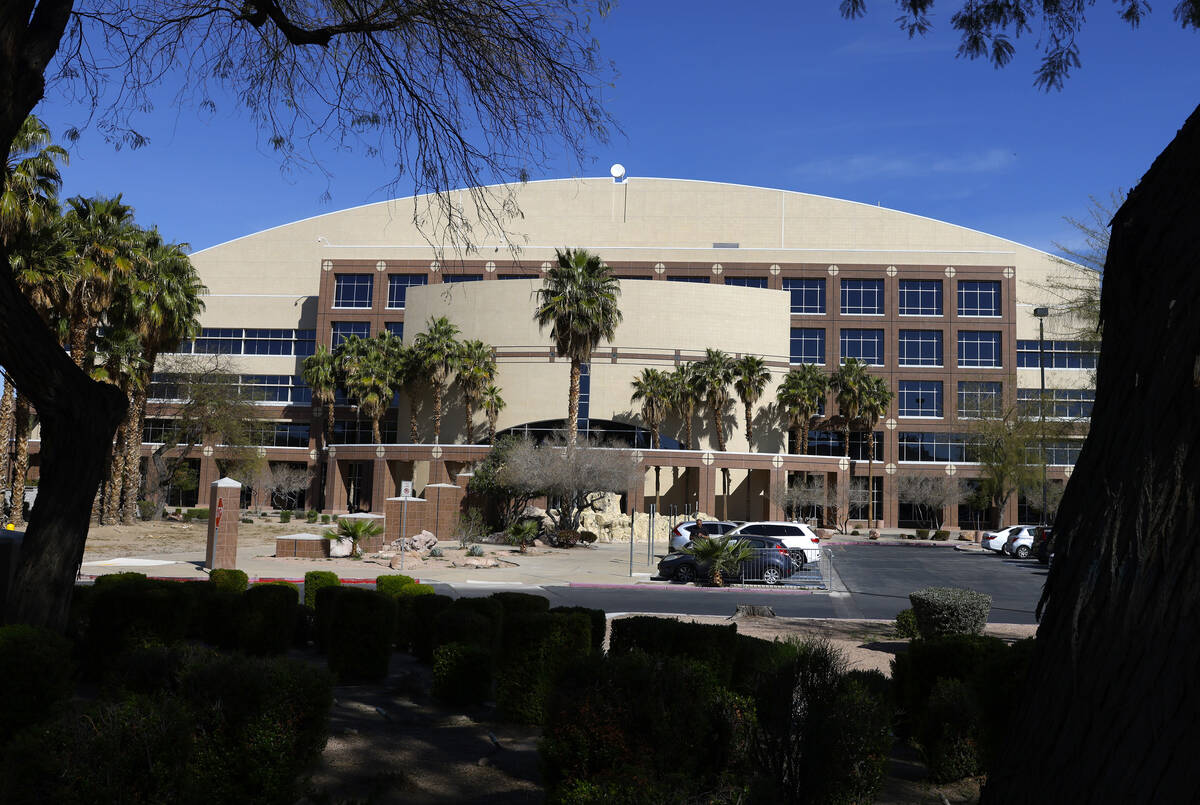Having pumped billions of dollars into building the next generation of computer chip factories in the US, the Biden administration is facing new pressure over the health and safety risks those facilities could pose. Environmental reviews for the new projects need to be more thorough, advocates say. They lack transparency around what kinds of toxic substances factory workers might handle, and plans to keep hazardous waste like forever chemicals from leaching into the environment have been vague.
Technology
Do we know enough about the health risks of new semiconductor factories?
/cdn.vox-cdn.com/uploads/chorus_asset/file/25578757/2092447526.jpg)
A coalition of influential labor unions and environmental groups, including the Sierra Club, have since submitted comments to the Department of Commerce on draft environmental assessments, saying that the assessments fall short. The coalition’s comments flag lists of potential issues at several projects in Arizona and Idaho, including how opaque the safety measures that manufacturers will take to protect both workers and nearby residents are.
“We aren’t objecting to the existence of these plants. We know that they’re going to have to use hazardous substances.”
The groups don’t want to stop the projects from moving forward, they say. Their aim is to make sure that the industry avoids missteps it made when the US used to make a lot more semiconductors. America’s first generation of semiconductor factories, or fabs, left Silicon Valley pockmarked with toxic Superfund sites that are still being cleaned up decades later. That’s why they say it’s crucial to assess the environmental risks now and give communities a chance to weigh in on new fabs springing up across the nation.
“We aren’t objecting to the existence of these plants. We know that they’re going to have to use hazardous substances. Obviously, we’re pushing for substitutes when they can, but one of our biggest problems is the lack of transparency,” says Lenny Siegel, executive director of the Center for Public Environmental Oversight (CPEO).
Federal dollars come with strings attached
Siegel is part of CHIPS Communities United, a coalition that has formed over the past year working to hold semiconductor manufacturers accountable to communities where they set up shop. The group is also spearheaded by some big-name unions including Communications Workers of America, United Auto Workers, and the International Brotherhood of Electrical Workers.
The coalition has formed at a pivotal time in the US. The CHIPS and Science Act, which passed in 2022, created $52.7 billion in funding for chip manufacturing. That’s supposed to help build up a domestic supply chain for computer chips in high demand for everything from cars and gaming to AI. As of June, more than half of that money had been distributed to eight companies building factories in 10 states. Private companies have committed an additional $395 billion to new semiconductor and electronics manufacturing in the US since 2021, according to the Biden administration.
If a company accepts federal funds, it can be subject to added environmental regulation on top of any local rules it has to follow at a construction site. A bedrock environmental policy in the US is the National Environmental Policy Act (NEPA), which requires federal agencies to conduct environmental reviews of major projects and share its findings with the public.
If NEPA applies, the agency will initially put together a document called an environmental assessment to determine if there could be “significant” environmental effects. If it finds no significant impact, then the review process ends. But if it deems there to be significant risks, it has to prepare a more detailed environmental impact statement and open up the process for more public engagement.
“There’s no guarantee”
So far, the Department of Commerce has released draft environmental assessments for three specific project sites: Micron’s plans in Boise, Idaho, as well as Intel’s and TSMC’s facilities in Arizona. All three drafts generally describe potential environmental effects as minor or stipulate that there would be “no significant effects” — as long as there are controls in place. (The jargon they use is “best management practices,” or BMP.)
CHIPS Communities United isn’t convinced. It submitted comments to the Department of Commerce calling on it to craft a more robust environmental impact statement for each of the projects. One of the key things they’re calling out is that there isn’t enough transparency on what those best management practices are and how they’d be monitored or enforced.
“These are huge projects, and they will have an environmental impact. The draft environmental assessments make assumptions about what is going to be done to mitigate those impacts, but there’s no guarantee that those mitigations will be carried out,” Siegel says.
Computer chips have a toxic history
A longtime activist, Siegel also served as mayor of Mountain View, California, in 2018 — where chip factories contaminated soil and water sources before manufacturing started to move abroad. Santa Clara County, where Mountain View is located, has more Superfund sites than any other county in the US. Arsenic, chloroform, and lead are just a few of the many hazardous substances that leached into groundwater and are still being cleaned up at old manufacturing sites.
Today, manufacturers use an ever-evolving chemical cocktail when making computer chips. The industry has taken strides to prevent pollution and replace certain substances that have been linked to miscarriages and other health risks. But toxicologists say the chemical mix is often changing faster than it takes to suss out the potential dangers. To make things harder, companies generally don’t like to share what kinds of chemicals they’re using, protecting them as trade secrets despite pressure from advocates to notify workers of the substances they’re handling.
“We also want to see workers empowered in the facilities, not just to know what they’re working with, but to have a voice in health and safety protocols, to have the right to stop production if things are dangerous,” says Judith Barish, coalition director for CHIPS Communities United. “And we want to know that workers won’t be retaliated against if they speak out.”
Forever chemicals have become a bigger concern lately with chip manufacturing. That encompasses thousands of different kinds of per- and polyfluoroalkyl substances (PFAS) that were used for years to make all kinds of products, from fabrics to nonstick pans, more durable. The US is just starting to craft regulations for the most common kinds of PFAS now, but there are still thousands of other forever chemicals for which there are no mandated exposure limits. Scientists are still scrambling to understand how exposure affects the human body, but there’s already evidence that high exposure can increase the risk of certain kinds of cancer, liver damage, high cholesterol, and some reproductive health issues. The semiconductor industry has also created its own PFAS consortium to study the chemicals and minimize pollution.
How to get rid of forever chemicals is another area of active research since they earned their name by being particularly hard to destroy. It’s no surprise that CHIPS Communities United is worried about how new semiconductor fabs will handle hazardous waste, including PFAS. All three draft assessments conclude that hazardous materials on-site pose “no significant effects” — but only if those so-called best management practices take place.
CHIPS Communities United wants to know how exactly those practices would be implemented. When it comes to forever chemicals, the assessments for TSMC and Intel say that the companies will separate PFAS from other waste streams and send it to off-site disposal facilities. What happens once those chemicals are off-site still worries the coalition. PFAS has been known to leak from landfills and even persist in the air after being incinerated.
A more detailed environmental impact statement for each of the proposed projects can help fill in the gaps, they contend. It’ll also give nearby communities more opportunities to weigh in on what kinds of solutions they’d like to see. Beyond that, they’d also like to see manufacturers enter into legally binding community benefits agreements. They also say that the Commerce Department should stipulate specific environmental and health protections in contracts with companies.
Those kinds of agreements can go a long way in the absence of up-to-date regulations. New federal rules for PFAS focus on drinking water rather than wastewater. And most chemical exposure limits set by the Occupational Safety and Health Administration (OSHA) haven’t been updated since the 1970s. OSHA says on its website that its exposure limits “are outdated and inadequate for ensuring protection of worker health.” Attempts to update them have repeatedly faced quick backlash from industry leaders and lawmakers with a deregulatory agenda.
Proposed rules for cutting down greenhouse gas emissions are similarly in peril after several Supreme Court rulings and the prospect of another Donald Trump presidency. The coalition is also concerned about how these new fabs will keep their climate pollution in check. How much water these facilities will use is another point of contention, especially in places like Arizona that grapple with worsening drought. The comments CHIPS Communities United sent to the Department of Commerce for plants being built by Intel, Micron, and TSMC cover a range of issues, including climate change and air quality, hazardous substances and waste, and the cumulative effects of building multiple manufacturing facilities near each other.
“In the absence of enforceable, transparent requirements to address such impacts, the applicant’s promise to address the impacts does not eliminate them,” the coalition’s responses to Micron and Intel projects say.
Intel declined to provide an on-the-record response to The Verge. It’s building two new chip factories and updating an existing fab at its Ocotillo campus in Chandler, Arizona. TSMC, which is building three new semiconductor fabs in Phoenix, didn’t respond to requests for comment. Micron is building a new 1.2-million-square-foot fab at its headquarters in Boise. In an email to The Verge, Micron said that questions regarding the draft environmental assessment should be directed to the CHIPS Program Office (CPO) within the Department of Commerce.
“We posted the draft [environmental assessments] for public comment to provide transparency and facilitate the public’s input in this process. CPO will carefully consider all public comments received during the comment period as we work to finalize the NEPA process,” CHIPS communications director, Geoff Burgan, said in a statement.
In other words, the Department of Commerce has to take all of these concerns into consideration as it finalizes its environmental reviews. That in itself is what makes federal review under NEPA a powerful tool. Last year, there was a failed attempt to exempt new chip factories from NEPA altogether.
“We believe that the people who work in the plants and live nearby have a right to know what they’re using,” Siegel says. So do others trying to figure out where to build a new home or childcare center, he adds. “People and planners need to have this information.”

Technology
New Russian threat targets over 100 Apple macOS browser extensions

Apple Macs are considered comparatively safer than Windows. This remains true, as in the past few months, we’ve noticed numerous malware and vulnerabilities affecting Windows laptops. However, a stealer malware has shown that Macs yet again aren’t completely immune to cyberattacks.
The malware, called Banshee, targets the extensions installed on your Mac in order to gain illegal access to your passwords, cryptocurrency and personal data. It affects a wide range of browsers, including Chrome and Safari.
GET SECURITY ALERTS, EXPERT TIPS – SIGN UP FOR KURT’S NEWSLETTER – THE CYBERGUY REPORT HERE
A woman working on her Mac laptop (Kurt “CyberGuy” Knutsson)
What you need to know
Researchers at Elastic Security Labs found that Banshee, a malware developed by Russian hackers, works on macOS x86_64 and ARM64 systems. The malware is being sold as a service to other bad actors for just $3,000, which the researchers think is pretty cheap compared to other malware available on the dark web to criminals. Yes, believe it or not, there’s a whole market for this stuff.
Apple has a tight infrastructure that prevents bad actors from targeting its devices, but hackers always find loopholes. In this case, it’s the browser extensions you install, whether it’s an ad blocker or an Amazon price tracker.
Targeted browsers and extensions
“Banshee Stealer targets a wide range of browsers, cryptocurrency wallets, and around 100 browser extensions, making it a highly versatile and dangerous threat,” Elastic Security Labs said. The malware targets several web browsers and crypto wallets, including Safari, Google Chrome, Mozilla Firefox, Brave, Microsoft Edge, Vivaldi, Yandex, Opera, OperaGX, Exodus, Electrum, Coinomi, Guarda, Wasabi Wallet, Atomic and Ledger.
Data theft capabilities
Once the malware gets into your Mac, it starts stealing your data. It can grab information about the system and passwords from the Keychain. It also pulls data from different file types stored on your desktop and in your documents. Plus, it’s got tricks to avoid detection, like figuring out if it’s in a virtual environment and using an API to steer clear of Macs where Russian is the primary language.

Illustration of a hacker working on a laptop (Kurt “CyberGuy” Knutsson)
4.3 MILLION AMERICANS EXPOSED IN MASSIVE HEALTH SAVINGS ACCOUNT DATA BREACH
How does the malware infect your computer?
The report from Elastic Security Labs didn’t go into detail about how the Banshee malware actually infects your computer. But it’s likely using the same tactics we’ve seen other Mac and Windows malware use before.
This usually involves sneaky methods like displaying fake pop-ups that mimic legitimate apps or services. Hackers often create a sense of urgency, pushing you to click on a link to “install an update” or “fix an issue” right away. Of course, instead of an update, that link installs the malware on your system.
It’s also unclear how widespread this malware is, which regions it’s targeting or the extent of the damage it’s caused so far. We reached out to Apple for a comment on this article but did not hear back before our deadline.

A woman working on her laptop (Kurt “CyberGuy” Knutsson)
MASSIVE SECURITY FLAW PUTS MOST POPULAR BROWSERS AT RISK ON MAC
4 ways to protect yourself from the Mac malware
While there’s no exact solution to prevent the Banshee malware, the following computer practices can help keep your Mac secure.
1) Limit and manage browser extensions: Be selective about the browser extensions you install. Only add extensions from well-known developers and those you truly need. Regularly review and manage your extensions to ensure they haven’t been compromised or are no longer necessary. Extensions with excessive permissions or that request access to sensitive data should be removed. Check out our top browser extensions to make life easier.
2) Be cautious with downloads and links: Only download software from reputable sources such as the Mac App Store or official websites of trusted developers. Be wary of unsolicited emails or messages prompting you to download or install updates, especially if they contain links. Phishing attempts often disguise themselves as legitimate update notifications or urgent messages.
The best way to protect yourself from clicking malicious links that install malware is to have strong antivirus protection installed on all your devices. Get my picks for the best 2024 antivirus protection winners for your Windows, Mac, Android and iOS devices.
3) Keep your software updated: Ensure that both macOS and all installed applications are up to date. Apple frequently releases security patches and updates that address vulnerabilities. Enable automatic updates for macOS and your apps to stay protected without having to manually check for updates. If you need more help, see my guide on keeping all your devices updated.
4) Use strong and unique passwords: To protect your Mac from malware, it’s also crucial to use strong, unique passwords for all your accounts and devices. Avoid reusing passwords across different sites or services. A password manager can be incredibly helpful here: It generates and stores complex passwords for you, making them difficult for hackers to crack.
It also keeps track of all your passwords in one place and automatically fills them in when you log into accounts, so you don’t have to remember them yourself. By reducing the number of passwords you need to recall, you’re less likely to reuse them, which lowers the risk of security breaches. Get more details about my best expert-reviewed password managers of 2024 here.
HOW TO REMOVE YOUR PRIVATE DATA FROM THE INTERNET
Kurt’s key takeaways
Macs, whether you’re using a MacBook or an iMac, are generally pretty secure, but they’re not completely foolproof. One weak spot has always been extensions, and that’s where the Banshee malware comes in. It exploits these vulnerabilities to swipe your important data and money. There aren’t any specific steps to deal with this exact threat, but sticking to good computing habits can help a lot. Make sure your downloads are from trusted sources, be cautious with unexpected email attachments and think carefully before installing anything.
What steps do you take to verify that downloads and extensions are from legitimate sources? Let us know by writing us at Cyberguy.com/Contact.
For more of my tech tips and security alerts, subscribe to my free CyberGuy Report Newsletter by heading to Cyberguy.com/Newsletter.
Ask Kurt a question or let us know what stories you’d like us to cover.
Follow Kurt on his social channels:
Answers to the most asked CyberGuy questions:
Copyright 2024 CyberGuy.com. All rights reserved.
Technology
Procreate’s anti-AI pledge attracts praise from digital creatives
Many Procreate users can breathe a sigh of relief now that the popular iPad illustration app has taken a definitive stance against generative AI. “We’re not going to be introducing any generative AI into our products,” Procreate CEO James Cuda said in a video posted to X. “I don’t like what’s happening to the industry, and I don’t like what it’s doing to artists.”
“Generative AI is ripping the humanity out of things. Built on a foundation of theft, the technology is steering us toward a barren future,” Procreate said on the new AI section of its website. “We think machine learning is a compelling technology with a lot of merit, but the path generative AI is on is wrong for us.”
Procreate is extremely well received by comparison. The company has stuck to a $12.99 one-time purchase model instead of moving to a rolling subscription like Adobe and Clip Studio Paint did, and has expanded into offering products for animation and (eventually) desktop users. Making such a firm pledge against introducing generative AI is likely just the icing on the cake for creatives who feel alternative options are dwindling.
Cuda said “We don’t exactly know where this story’s gonna go, or how it ends, but we believe that we’re on the right path to supporting human creativity.”
Technology
Mechanical artificial heart is using high-speed rail tech to keep patients alive
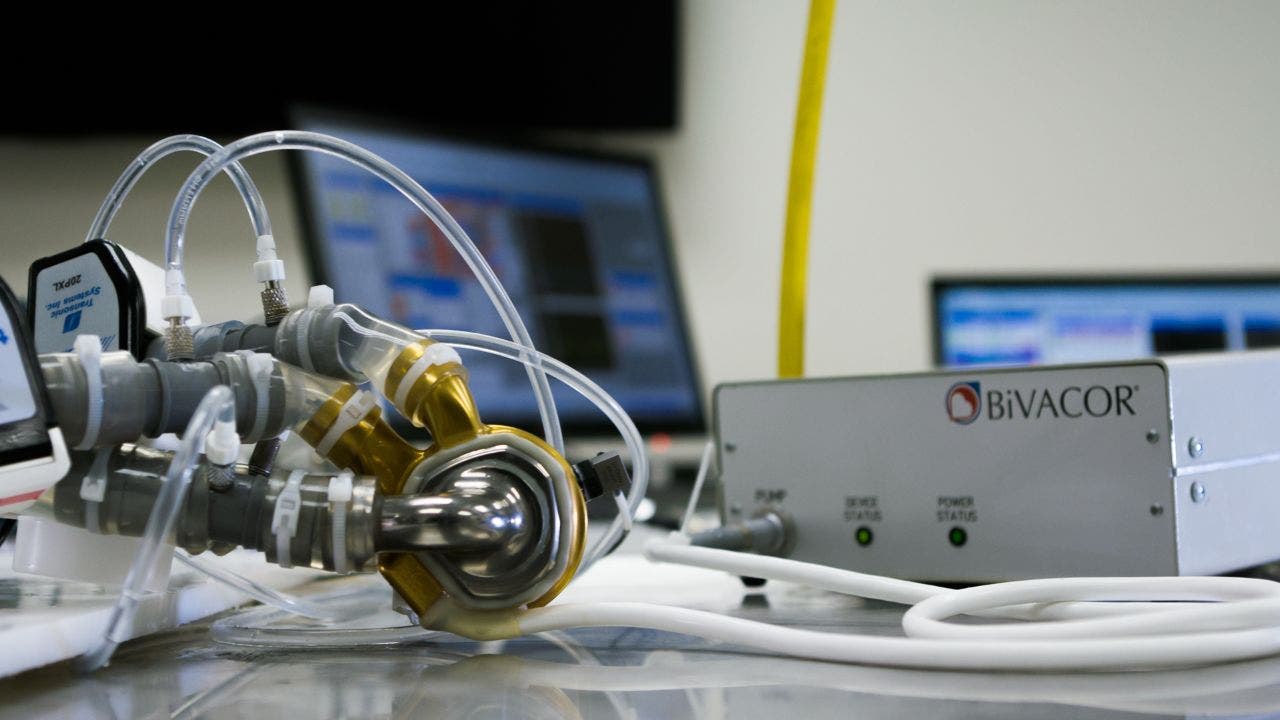
In a groundbreaking medical achievement, the first fully mechanical heart developed by BiVACOR has been successfully implanted in a human patient. This milestone marks a significant advancement in the field of cardiac care, offering new hope for those awaiting heart transplants.
GET SECURITY ALERTS, EXPERT TIPS – SIGN UP FOR KURT’S NEWSLETTER – THE CYBERGUY REPORT HERE
BiVACOR Total Artificial Heart (BiVACOR) (Kurt “CyberGuy” Knutsson)
A titanium ticker
The BiVACOR Total Artificial Heart (TAH) is a compact, titanium-constructed device about the size of a fist. Despite its small stature, it packs a powerful punch. It can pump blood at a rate of 12 liters per minute, which is enough to support an adult male during exercise.
Unlike other artificial hearts that rely on flexible polymer diaphragms to pump blood, the BiVACOR TAH uses a magnetically levitated rotor. This design eliminates the wear and tear associated with traditional mechanical hearts, potentially increasing their longevity.
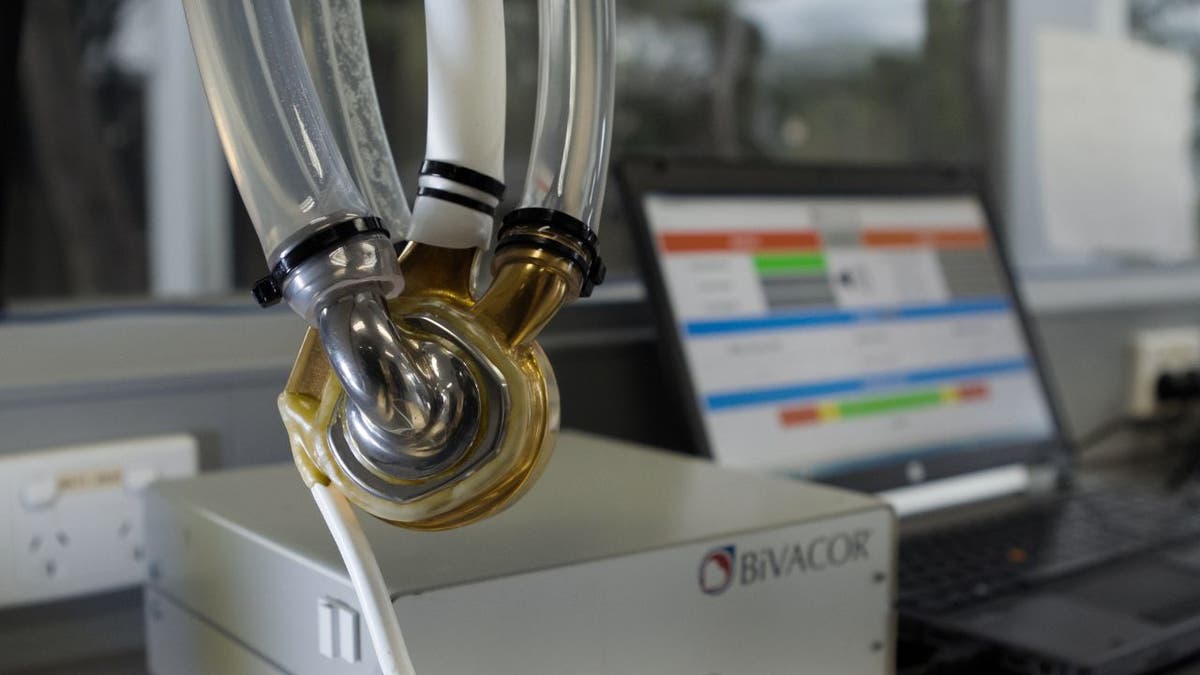
BiVACOR Total Artificial Heart (BiVACOR) (Kurt “CyberGuy” Knutsson)
4.3 MILLION AMERICANS EXPOSED IN MASSIVE HEALTH SAVINGS ACCOUNT DATA BREACH
A bridge to life
The primary purpose of the BiVACOR TAH is to serve as a bridge-to-transplant solution. According to the OPTN/SRTR 2022 annual data report, the number of heart transplants in the United States has been on the rise. Since 2011, adult heart transplants have increased significantly by 85.8%. This device could be a lifeline for many of those patients.
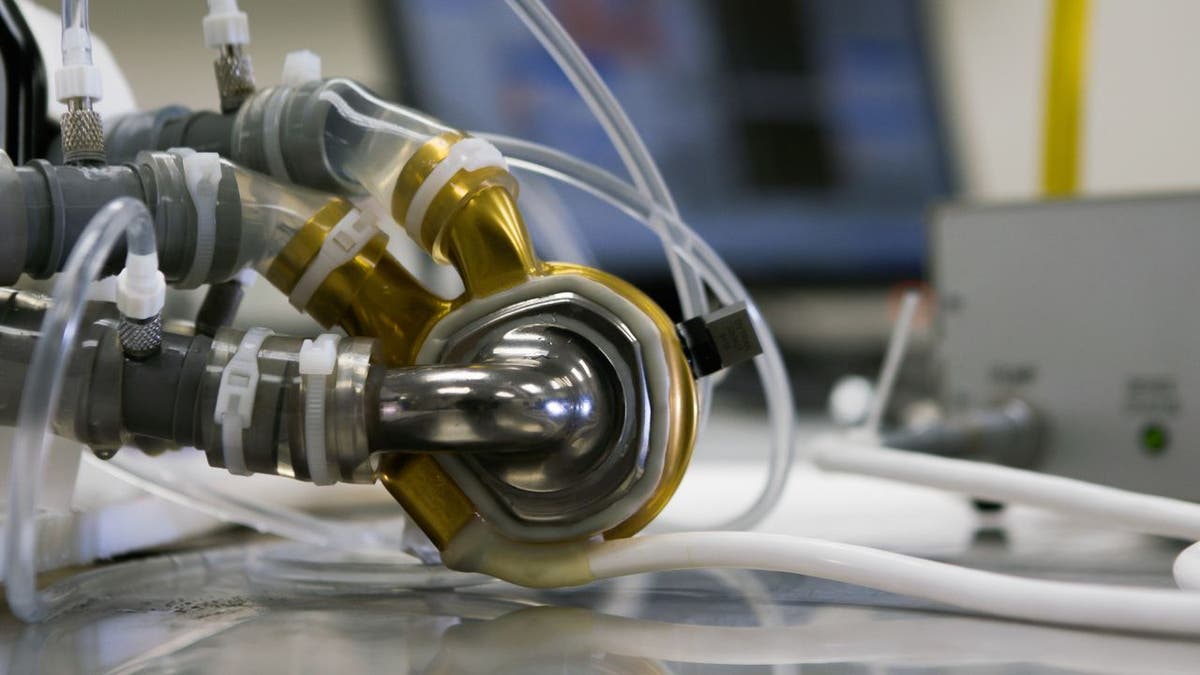
BiVACOR Total Artificial Heart (BiVACOR) (Kurt “CyberGuy” Knutsson)
PHARMA GIANT’S DATA BREACH EXPOSES PATIENTS’ SENSITIVE INFORMATION
The first beat
On July 9, 2024, history was made at the Texas Heart Institute when the first patient received the BiVACOR TAH as part of an FDA-approved early feasibility study. This procedure was carried out at Baylor St. Luke’s Medical Center in the Texas Medical Center.
Dr. Joseph Rogers, president and CEO of the Texas Heart Institute and national principal investigator on the research, said, “The Texas Heart Institute is enthused about the groundbreaking first implantation of BiVACOR’s TAH. With heart failure remaining a leading cause of mortality globally, the BiVACOR TAH offers a beacon of hope for countless patients awaiting a heart transplant.”
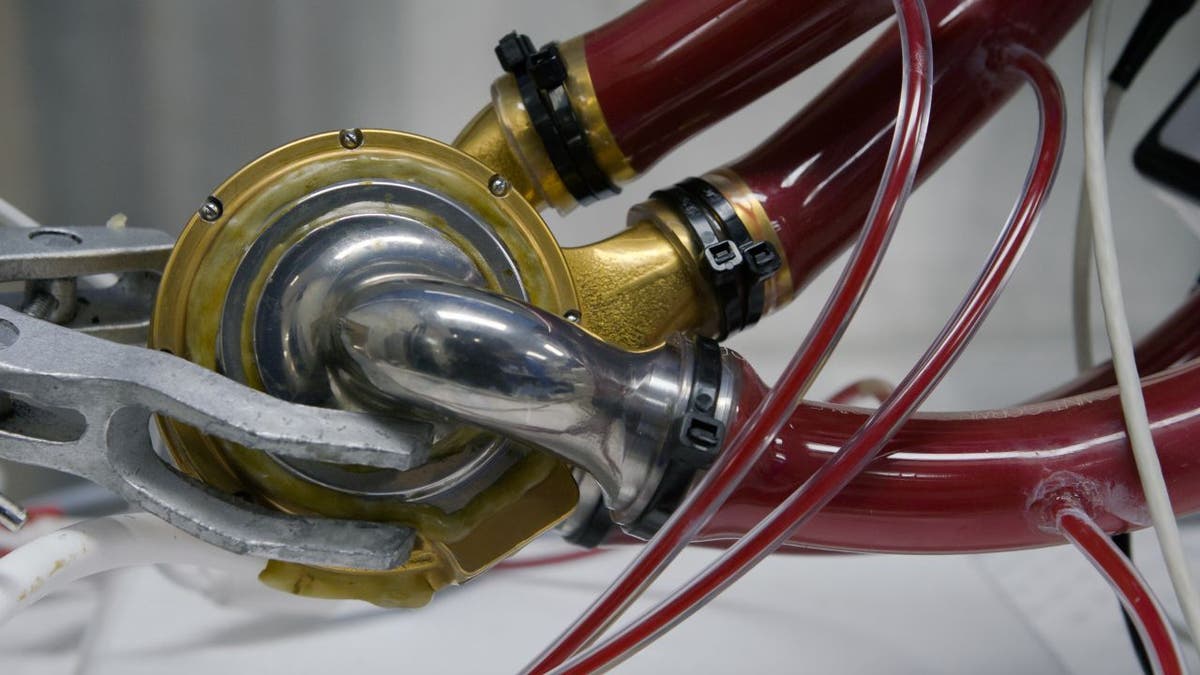
BiVACOR Total Artificial Heart (BiVACOR) (Kurt “CyberGuy” Knutsson)
SKYROCKET TO A HEALTHIER LIFESTYLE WITH THIS GEAR IN 2024
The heart of the future
BiVACOR’s Total Artificial Heart is not your average mechanical heart. It employs the same magnetic levitation technology used in high-speed rail lines, creating a frictionless environment for its single moving part. This innovative design could potentially lead to longer-lasting and more reliable artificial hearts compared to traditional models.
Dr. Daniel Timms, founder and CTO of BiVACOR, said, “Utilizing advanced maglev technology, our TAH brings us one step closer to providing a desperately needed option for people with end-stage heart failure who require support while waiting for a heart transplant.”
TRY CYBERGUY’S NEW GAMES (CROSSWORDS, WORD SEARCHES, TRIVIA AND MORE!)

BiVACOR Total Artificial Heart (BiVACOR) (Kurt “CyberGuy” Knutsson)
The road ahead
Following the success of the first implantation, the study aims to enroll four additional patients. This careful, step-by-step approach will help researchers evaluate the safety and performance of the BiVACOR TAH in real-world conditions. The U.S. National Institutes of Health estimates that up to 100,000 patients could immediately benefit from mechanical circulatory support.

BiVACOR Total Artificial Heart (BiVACOR) (Kurt “CyberGuy” Knutsson)
A promising future: Cautious optimism and collaborative innovation
While it’s important to balance our excitement with cautious optimism, the potential impact of this technology cannot be overstated. If the BiVACOR TAH proves successful in clinical trials, it could transform the landscape of heart failure treatment, offering hope to millions of patients worldwide.
As we stand on the brink of this new era in cardiac care, one thing is clear: the heart of innovation beats strong in the medical world, and the future looks brighter for those facing the challenges of heart failure. The collaboration between BiVACOR, the Texas Heart Institute, Baylor College of Medicine and Baylor St. Luke’s Medical Center demonstrates the power of teamwork in pushing the boundaries of medical science and improving patient outcomes.

BiVACOR Total Artificial Heart (BiVACOR) (Kurt “CyberGuy” Knutsson)
Kurt’s key takeaways
The successful implantation of BiVACOR’s Total Artificial Heart represents a quantum leap in cardiac care technology. By harnessing the power of magnetic levitation, this device offers a glimpse into a future where mechanical hearts could provide reliable, long-term support for patients with severe heart failure.
Would you feel comfortable relying on artificial organs for long-term health and why? Let us know by writing us at Cyberguy.com/Contact.
For more of my tech tips and security alerts, subscribe to my free CyberGuy Report Newsletter by heading to Cyberguy.com/Newsletter.
Ask Kurt a question or let us know what stories you’d like us to cover.
Follow Kurt on his social channels:
Answers to the most asked CyberGuy questions:
Copyright 2024 CyberGuy.com. All rights reserved.
-

 Ohio5 days ago
Ohio5 days agoOhio taxpayers sent families $966 million for private school tuition: Capitol Letter
-

 World7 days ago
World7 days agoWhat could an EU Commissioner do to tackle the housing crisis?
-

 Politics1 week ago
Politics1 week agoTim Walz 'misspoke' about using weapons ‘in war,' Harris campaign says: report
-

 Politics1 week ago
Politics1 week agoGOP states sue to stop Biden admin extending Obamacare to illegal immigrants
-

 Politics1 week ago
Politics1 week agoTrump legal cases in limbo after SCOTUS immunity ruling, freeing up schedule to campaign
-

 News1 week ago
News1 week agoPhotos: Family of Michael Brown Jr. marches on Ferguson 10 years later
-

 News1 week ago
News1 week agoCross-Tabs: August 2024 Times/Siena Poll of the Likely Electorate
-

 Politics1 week ago
Politics1 week agoSecret Service apologizes after breaking into Massachusetts salon to use bathroom before Harris fundraiser



